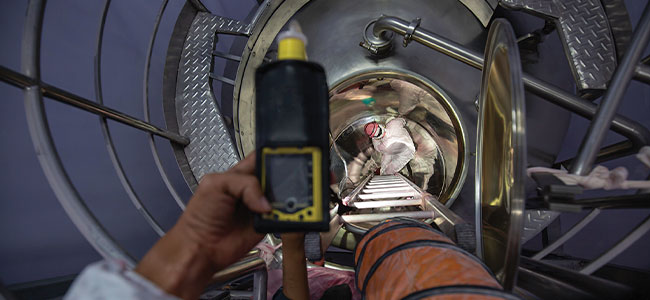
5 Ways Connected Gas Detection Devices Can Boost Your Organization’s Productivity
Here’s why safer work doesn’t have to mean slower work.
- By Anne Osbourn
- Mar 01, 2024
Does safer work mean slower work? It certainly does not have to. PPE and gas detection solutions can help enhance worker safety, visibility and accountability while also driving productivity. These measures could be especially impactful when you consider that workplace injuries in 2021 caused U.S. companies to lose an estimated nearly $170 billion in wages, productivity, medical expenses and administrative expenses.
With the benefits of connected work for your gas detection program, you can help enhance safety as well as productivity. Connected work programs can allow you and your team to make more efficient and productive use of your time and resources.
Put simply, the term “connected” not only means a connected device — one that comes with cutting-edge cellular connectivity through leading national networks — but also a comprehensive solution inclusive of hardware and software. This type of solution can provide the real-time data to help gather insights in order to help drive adaptable, proactive safety programs.
By itself, a properly calibrated and bump-tested gas detector is a powerful personal protective device, for example, for the individuals on-site and to provide the organization with historical data for consideration.
But a connected work platform can take a gas detection program to the next level.
A connected work platform combines real-time data, connected PPE/gas detection wearables and advanced software solutions to help provide more visibility across these areas of concern:
• Workers
• Worksites
• Workflows
In fact, connectivity enables the kind of visibility that can further enhance a safety program and improve safety outcomes. Connected gas detection programs provide powerful data which can be harnessed to help improve operational efficiency.
Even better, a strategic connected worker-worksite-workflow platform helps take your gas detection program a step further in terms of safety and productivity. Plus, it sets you up for a scalable and adaptable safety program for today — and tomorrow.
Here are five ways in which connectivity can help make your organization more productive.
1. Data and Insights
Get deeper insights into your operation with the generation of critical data points about off-site workers and your fleet of detectors. You can help keep lone workers safe with data including gas exposure alerts, man-down alarms, panic button presses and device concern warnings so that you can act as swiftly as possible for the circumstances. Access to data also enables you to optimize deployment of your assets and to identify areas for safety training, common trends across events, and opportunities for efficiencies and possible cost reduction. Improved practices also help reduce safety incidents, along with their related downtime and productivity losses.
This article originally appeared in the February/March 2024 issue of Occupational Health & Safety.